
Bridging the gap between Pet Owners and Pets
Communication through Animal-Centric Approach
Sheryl Yeo | A0221509M
Word Count: 2475
Abstract
This dissertation explores the relationship dynamics between pet owners and their animals. It delves into understanding pet behaviour, stress signs, and the role of quality time in communication and bonding.
Additionally, it discusses animal-cantered design to improve the petowner relationship. This research aims to foster a more empathetic and fulfilling connection and communication between humans and their pets.
2
01 5 6 9 10 11 13 14 15 16 17 19 20 21 25 26 27 28 Introduction The s lent str ggl How t all began: The ca se The nterplay of pet behav o r and owner hab t Relat onsh p dynam c between pet owners and the r pet Tra n ng perspect ve from pet owner Understand ng pet’s behav o Understand ng s gns of stresse Understand ng soc al c e Defin ng these term Work ng w th them Understanding Pet’s Behaviour Case St dy Case St dy Case St dy 3 An mal-Centred Des gn (ACD Des gn xample Des gn xample Des gn xample 3 Improving Owner and Pet’s Communication Designing for Pets 02 03 04 Conclusion 05 Bibliography 06 Content 30 32
01 Introduction

Imagine a world where pets could voice their discomfort and concerns about their general health.
The Silent Struggle
Unfortunately, our reality is quite different. Unlike humans, pets cannot voice their general health problems. Instead, they rely on nonverbal cues and body language, creating a challenge for pet owners, veterinarians, and researchers.
In this silent struggle, it is the responsibility of pet caregivers to recognize and address their pets' health issues.
5
Image Credits: Petrina Firth, Is My Dog in Pain?

How It All Began:
The Cause
Understanding the root causes of poor health in dogs is a multifaceted endeavour. It begs the question: how do these issues come into existence in the first place? Examining this conundrum reveals a complex interplay of factors, encompassing not only the habits and behaviours of our canine companions but also our own actions and decisions as responsible pet owners. Together, these elements contribute to the puzzle of canine health and pave the way for effective solutions.
Image
Credits: Fabian Gieske, Unsplash
6
So,
who is the problem?
Dog?
Human?
02Understanding Pet’s Behaviour
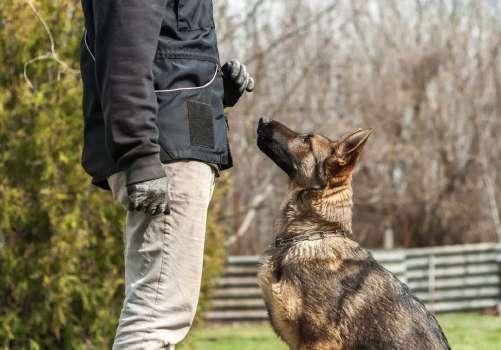

The Interplay of Pet Behaviour and Owner Habits
Beyond variations in training techniques, one critical aspect affecting dog behaviour is the inconsistency in owner responses – the propensity to reward or punish a dog's behaviour inconsistently on different occasions. In 2007, Casey et al. conducted research that revealed a significant correlation between such inconsistent owner behaviour and an increase in reported behaviour problems as perceived by dog owners. 1
Notably, there remains an unexplored aspect in the context of this issue: whether the consistency of owner responses to their dog's behaviour differs among those with smaller dogs compared to those with larger canine companions. This uncharted territory prompts an examination of the potential variations in owner behaviour and its impact on the behaviour of dogs based on their size.
Image Credits: Union Lake Pet Services
1 Casey, R. A., Twells, C., & Blackwell, E. J. (2007). 3: An investigation of the relationship between measures of consistency in owners and the occurrence of ‘behavior problems’ in the domestic dog. Journal of Veterinary Behavior, 2(3), 83-84. 9
Image Credits: Ирина Мещерякова, Getty Images/iStockphoto
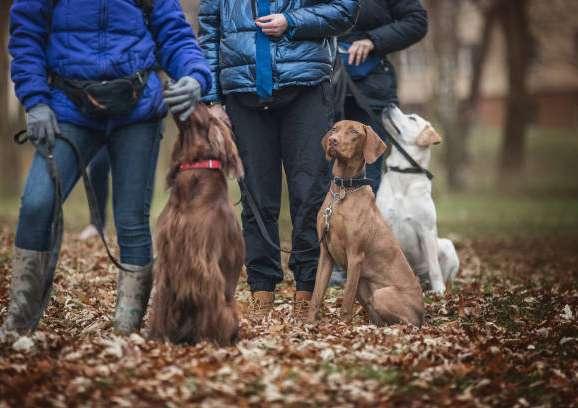
Relationship dynamic between pet owners and their pets
In the year 1999, a report by Coren (1999) shed light on a rather intriguing observation: only a mere 24% of dog owners chose to partake in formal obedience training classes for their canine companions. 2
Many dog owners may not prioritize formal training due to various reasons. Some dogs may not display significant behavioural issues, while owners might be hesitant or unready for professional training. As a result, they opt for a DIY approach, relying on books, online videos, or advice from their social circle. This diverse range of training methods can complicate the dynamic between dog owners and their pets.
2 Coren, S. (1999). Psychology applied to animal training. Psychology: Fields of application, 199-217.
10
Image Credits: AsyaPozniak, Getty Images/iStockphoto

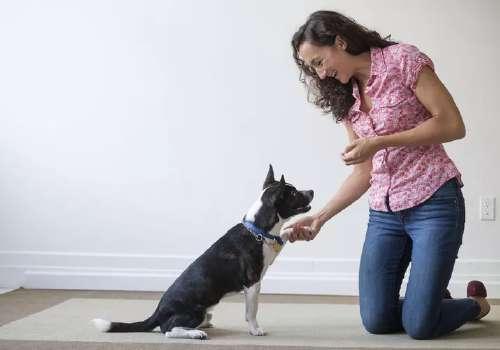


Training Perspective from Pet Owners
As noted by Bennett and Rohlf in 2007, a lack of interest in formal dog training can be attributed to two distinct groups of dog owners. The first group comprises owners whose dogs do not exhibit problematic behaviours, or at least, these issues are not readily apparent. The second group consists of owners who face behavioural challenges with their dogs but may feel hesitant or incapable of acquiring the skills necessary to address these issues. 3
Pros and Cons
Do-It-Yourself Dog Training
Able to establish a healthy relationship with your companion.
Training a pet demands a significant investment of time, energy, patience, and knowledge, which some owners may lack. When efforts do not yield the desired results, it often leads to frustration among pet owners.
Professional Dog Training
Guaranteed results.
Dog training cost.
3 Bennett, P. C., & Rohlf, V. I. (2007). Owner-companion dog interactions: Relationships between demographic variables, potentially problematic behaviours, training engagement and shared activities. Applied Animal Behaviour Science, 102(1-2), 65–84. Retrieved from: https://doi.org/10.1016/j.applanim.2006.03.009
Image Credits: Pet Resort and Training Centre, Paw Commons
Image Credits: Coty Perry, World Animal Foundation
Image Credits: Melounix, Shutterstock
Image Credits: Tetra Images, Getty Images
Pros Cons 11
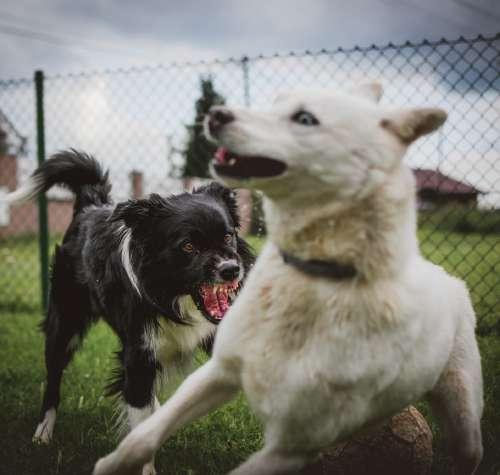


 Image Credits: Mikhail Pletnev, EyeEm via Getty Images
Image Credits: Alvan Nee, Unsplash
Image Credits: Good Dog People
Image Credits: Mikhail Pletnev, EyeEm via Getty Images
Image Credits: Alvan Nee, Unsplash
Image Credits: Good Dog People
What do these images reveal? Angry?
Bored?
Happy?
Sad? 12
Image Credits: Websubstance, Getty Images/iStockphoto
Understanding Pet’s Behaviour
Dogs, beloved members of our households and captivating subjects of study, display a diverse range of behaviours that have a significant impact on the way we carry out certain activities with them, such as brushing their teeth or trimming their nails, and more. It is essential to comprehend their behaviour to avoid undue stress when engaging in certain activities with them.
 Image Credits: Mikhail Pletnev, EyeEm via Getty Images
Image Credits: Mikhail Pletnev, EyeEm via Getty Images
13
Understanding signs of stresses
To understand canine stress, it's crucial to recognize various signs that indicate their emotional state. These signals, outlined by Veterinary Centres of America (VCA), include behaviours like pacing, shaking, whining, barking, yawning, drooling, and more. They provide insight into a dog's emotional well-being and can be linked to their dental health.
However, interpreting these signs isn't straightforward, as noted by Townsend, L. and Gee, N.R. in a 2021 study. Factors like breed-specific characteristics, the dog-handler relationship, and how dogs are conditioned in response to distress signals can complicate our understanding of canine stress. 4


4 Townsend, L., & Gee, N. R. (2021). Recognizing and Mitigating Canine Stress during Animal Assisted Interventions. Veterinary Sciences, 8(11), 254. Retrieved from: https://doi.org/10.3390/vetsci8110254 Image
www.vetbehaviourteam.com
14
Credits: Vet Behaviour Team,
Image Credits: Dr. Sophia Yin, DVM, MS
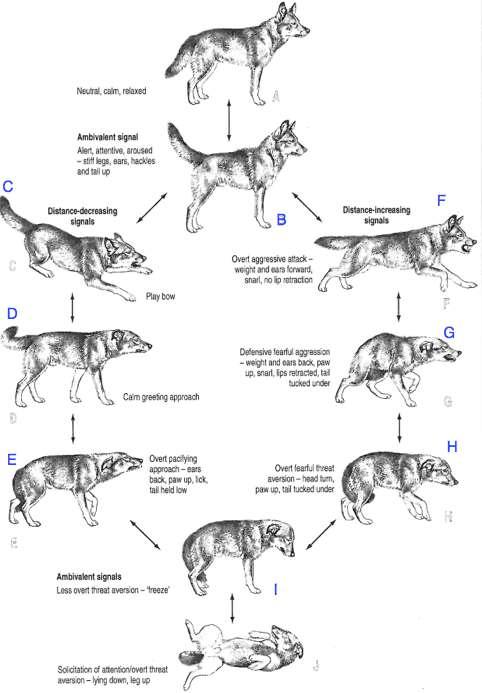
1
Understanding social cues
Ambivalent signals in the context of dog behaviour refer to actions that result from conflicting signals, causing the dog to be uncertain about how to react and leaving them unsure about their next course of action. 5
According to Tami and Gallagher (2 9), there are a few terms associated with the word “ambivalent signals”.
uch terms include Indifferen Confidenc ubmissiv Friendly 6
Figure
Image Credits: Original Shepherd (2002) ethography, Shepherd Kendal
5 6 Shepherd, K. (2002). Development of behaviour, social behaviour and communication in dogs. In Horwitz, D. F., Mills, D. S., & Heath, S. (Eds.), BSAVA Manual of Canine and Feline Behavioural Medicine (8-20). Quedgeley, Gloucester: British Small Animal Veterinary Association.
15
Tami, G., & Gallagher, A. (2009). Description of behavior of domestic dog (Canis familiaris) by experienced and inexperienced people. Applied Animal Behavior Science, 120, 159-169.
Defining these terms
Indifferent
Behavioural cues encompass various signs such as remaining seated, having a relaxed body posture, avoiding eye contact, maintaining the same posture when approached, and displaying disinterest in the object they are focusing on when a dog approaches it. (Tami & Gallagher, 2009, p. 161)

Behavioural cues encompass various signs such as attentiveness, maintaining eye contact without staring, moving forward, displaying forward and relaxed ear positions, investigating or sniffing the object of their focus, actively interacting with the object they are focused on, holding their tail up, and retreating when barked at. (Tami & Gallagher, 2009, p. 161)

Behavioural cues encompass various indicators, including a tail held low while wagging, occasional glances directed at the object of interest without sustained focus, allowing the object of their attention to approach, and assuming a lying-down position when the object of their interest comes nearer. Gallagher, 2009, p. 161)

Behavioural cues encompass various signals, such as moving forward, maintaining a relaxed body and ears, having a horizontally held and wagging tail, and making eye contact without intense or prolonged staring. (Tami & Gallagher, 2009, p. 161)

Friendly
Submissive Confidence
Image Credits: Ross Sokolovski, Unsplash
Image Credits: Tadeusz Lakota, Unsplash
Image Credits: Eric Isselee, Shutterstock
6 Tami, G., & Gallagher, A. (2009). Description of behavior of domestic dog (Canis familiaris) by experienced and inexperienced people. Applied Animal Behavior Science, 120, 159-169. 16
Image Credits: Standert, Getty Images
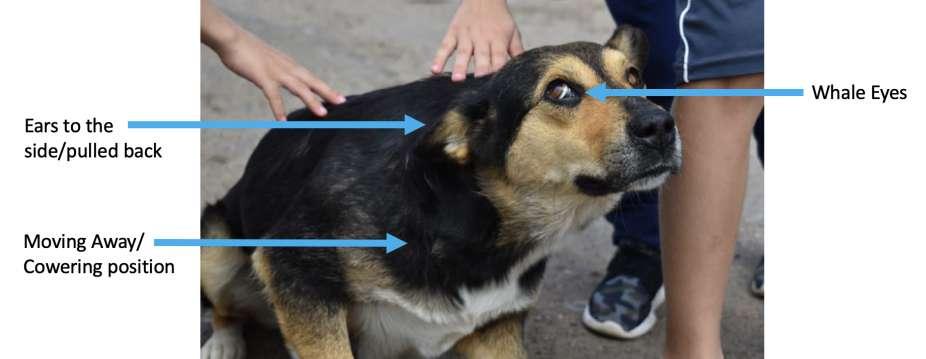
https://www.ourcompanions.org/is-my-dog-stressed-around-kids/
Working with them
Dogs are not mere 'tools' to be exploited solely for human benefit; they are our companions and allies who, much like us, respond to stressors. The key difference lies in their unique mode of communication. It falls upon those of us who share our lives and work with dogs to decipher the signals they convey and advocate for their well-being as we collaborate in enhancing the quality of human lives.
To help a stressed dog, practice empathy and gentleness. Recognize their stress, avoid stress triggers, and provide a calming environment. Don't use punishment or pressure. Pay attention to their body language and give them space when needed. For persistent stress or behavioural problems, consult a vet or behaviour specialist. Building a supportive bond is vital for managing their stress.
17
Image Credits: Examples of Stress in Dog-Child Interactions, Retrieved from:
03 Improving
Pet’s
Owner and
Communication


Bonding Through Transformation
Case Study One
However, what if this could transform into an activity that propels both parties toward a brighter and healthier future? In essence, it signifies a shift in habits. Drawing inspiration from an article written by Rockwood, K. (2016), and based on the real-life story of Trixia, her journey serves as an exemplar. When her fertility specialist cancelled her treatment due to her weight of 265 pounds, she embarked on a courageous journey. Trixia overhauled her diet, embarked on hiking adventures with her dog and husband, and what began as just a minute of exercise gradually evolved into covering miles. Two years of unwavering dedication and perseverance led to her triumphant completion of a half marathon. 7
Trixia's remarkable transformation extended beyond herself; her golden retriever, Charlie, also underwent a remarkable change. He transitioned from an overweight 78 pounds to a healthy 56. Prior to his weight loss, playing fetch was a struggle as he struggled to keep up. This compelling example serves as a testament to the fact that when both Trixia and her golden retriever, Charlie, embarked on their transformative journey together, they not only supported one another but also forged a profound bond. This unique support system between pet and owner catalysed remarkable changes in both their lives, demonstrating the incredible potential for mutual transformation and a healthier, happier future.
Image Credits: Before (Left) and After (Right), Trixia Lassiter
7 Rockwood, K. (2016) How My Dog and Lost 140 Pounds. (2016, May 19). Good Housekeeping. Retrieved from: https://www.goodhousekeeping.com/health/diet-nutrition/a38567/how-my-dog-and-i-lost-weight/ 19
Image Credits: Charlie, Trixia’s Golden Retriever, Trixia Lassiter
Taking care of my pet is... than before Easier
Same
More Difficult
I get... comfort from pet than before
Less
Same
More
I spend... time interacting with my pet than before
Less
Same
More
I enjoy spending... time with my pet than before
Less
Same
More
My pet has... time available for undisturbed rest
Less
Same
More
Has your pet changed behaviour during the lockdown?
Yes
No
Figure 2
Extracted summary of the answers for the dogs and cats in the sample (at least 1 % of the sample), expressed as the percentage (and total number) of pets ascribed to each of the subcategories of possible answers
Retrieved from: https://doi.org/10.1016/j.jveb.2021.09.009. Improved/Changed Behaviours
Human-Canine Relationship During Covid-19
Case
Study Two
During the COVID-19 lockdown that took place from April to May 2020, a research study explored the dynamics of the relationship between humans and their dogs in this unprecedented period. Pets played a vital role during the lockdown, providing companionship and easing loneliness for their owners. Yet, challenges like accessing veterinary care, financial constraints, and changes in pet behaviour, such as increased aggression or neediness, raised concerns about the well-being of both pets and their owners.
8
In Figure 2, it becomes evident that as pet owners dedicate more time to their dogs and cats, there is a noticeable positive correlation with changes in their behaviour. While negative behavioural changes are not extensively observed, it's essential to acknowledge that lockdowns serve as a temporary solution that may potentially lead to separation anxiety in the future. Nevertheless, this study underscores the significant positive impact of increased quality time spent with one's cherished animal companions.
8
De Herdt, V., Enders
M.-J., & Moons, C. P. H. (2021). Pets and their owners during the first COVID-19 lockdown period: Perceived changes in routines and emotions – An exploratory study. Journal of Veterinary Behavior. Retrieved
Martos Martinez-Caja, A.,
Slegers,
from: https://doi.org/10.1016/j.jveb.2021.09.009
Dogs Cats 19.0%
15.6%
68.0%
411) 79.5% (1845) 12.0%
) 4 8% (112) 0.3% (12) 0.3% (7) 72.7% (2581) 69.9% (1587) 26.9% (955) 29.8% (678) 3.4%
0.5% (12) 43 8% (1554) 46.8% (1062) 52.9% (1876) 52.7% (1196) 2.8%
0.5%
6
(2404) 69.6% (1582) 29.4% (1045) 29.9% (679) 21.9% (775) 21.9% (491) 69.5% (2462) 73.0% (1637) 8.6%
304) 5.0%
3
18.3%
7.8%
08) 69.
62) 73.0%
37
(682)
(363)
(2
(458
(119)
(101)
(12)
7.7%
(
(11
)
(658) 1
(4
5% (24
(16
)
20
Communication through Augmentative and Alternative Communication (AAC)
Case Study Three
Have you ever come across those viral videos on social media platforms where dogs press buttons on a soundboard to convey their desires to their owners?
Christina Hunger, a speech-language pathologist based in San Diego, California, successfully trained her two-month-old puppy, Stella, a Catahoula/Blue Heeler mix, to utilise adaptive tools for communication.
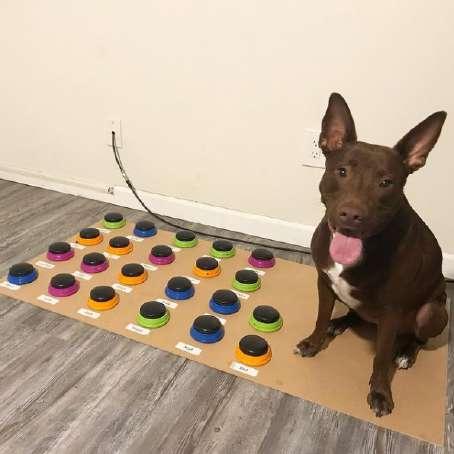
She believes that "everyone deserves a voice" and “if dogs can understand words we say to them, shouldn't they be able to say words to us?" (Hunger, 2021) 9
Their journey began with an "outside" button that Stella associated with going outdoors. She soon started pressing it herself when she wanted to go outside. Additional buttons were introduced for words like "eat," "water," and more. Notably, they responded to Stella's button presses without using treats, highlighting the importance of acknowledging her communication and treating her voice and opinions with equal significance.

TikTok superstar, Bunny, whose owner, Devine found inspiration from Christina Hunger and expressed her desire to establish a stronger, more connected relationship with her dog. She recognised the untapped potential within the humananimal bond and was determined to fully explore and embrace it. 10
9 10 Hunger, C. (2021). How Stella Learned to Talk : The groundbreaking story of the world’s first talking dog. Bluebird.
Tacoma woman teaches her Sheepadoodle how to communicate using buttons. (2020, October 9). The Seattle Times. Retrieved from: https://www.seattletimes.com/life/a-talking-dog-tacoma-woman-teaches-her-sheepadoodle-how-to-communicate-using-buttons/
Image Credits: hunger4words, Instagram
Image Credits: Alexis Devine is teaching her sheepadoodle dog named Bunny to communicate with her by pressing buttons. Screenshot from video by Alexis Devine.
21
Designing for Pets
04
What
if,
we as designers,
could create products to ? enhance pets' quality of life
how
to achieve this? But,
human
needs animal
needs
human/animal
interaction
Wellbeing: the definition of collaborative relationships for the design of successful products and services.
(Ruge L., 2016)
Animal-Centred Design (ACD)
Much like Human-Centred Design, Animal-Centred Design (ACD) follows a comparable methodology, with a unique emphasis on the needs and behaviours of animals. (Ruge L., 2016) 11
Animal Centred Solutions
By using empathy as the guiding principle in the design of products or services for animals, human behaviour change happens by use of the product or service, allowing for a quicker betterment in welfare.
11 Ruge L. In: First International Conference on Human Behavior Change for Animal Welfare. Dorking, Surrey, UK. (19 - 21 September 2016)
25

FIDO
Design
Example One
Facilitating Interactions for Dogs with Occupations, also known as FIDO, has launched wearable electronic devices incorporated into customised dog collars and harnesses, fostering effective communication between dogs and their owners. These devices are tailored to the specific needs of service animals. For instance, hearing dog harnesses feature pre-recorded voice communication, while harnesses for dogs of epileptic owners can send text messages, emails, or make emergency phone calls. FIDO's commitment to animal-centred design is evident in this innovation, enabling pets to express their needs and enhance their owners' well-being.
12
The essence of ACD at FIDO centres around the design process itself. It entails a deep understanding of how materials, like rubber in the context of a dog toy, can be harnessed to engage the animal effectively. FIDO's approach to this process revolves around the concept of partnership, emphasising collaborative efforts between humans and animals. It employs a multidisciplinary approach and cultivates empathy towards a variety of non-human entities, fostering a comprehensive and holistic perspective.
12 Brown, C. (2020, August 28) Wearable technology gives service dogs a voice. (n.d.). Wearable Technology Gives Service Dogs a Voice | Alltech. Retrieved from: https://www.alltech.com/blog/wearable-technology-gives-service-dogs-voice 26
Image Credits: Schubert demonstrates the bite sensor on a FIDO project vest, Rob Felt


Musical Instruments for Grey Parrots
Design Example Two
In 2016, a collaborative research project involving Ailen Productions, zoologists, and animal keepers from ARGE Papageienschutz embarked on an innovative journey. Their mission was to enhance the quality of life for grey parrots in captivity while fostering artistic expression. They achieved this by exploring the use of musical instruments and interfaces as tools for engagement and enrichment. 13
Grey parrots engage in communication with humans through a unique form of "music" produced with specially designed instruments. Unlike traditional methods that merely provide pleasant sounds, the musical interface approach grants parrot the autonomy to manipulate and control the auditory stimuli. This method emphasizes a non-coercive training approach and refrains from the use of reward systems. By using this approach, the parrots can experiment with various interactions, playfully engaging with the musical interfaces to create a range of sounds and experiences. 14
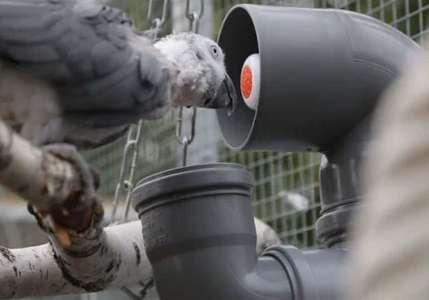
Method Used:
System satisfies specified requirements Need of animal-centered design
Understand the context o use
13 14 metamusic Project Web-Site. Retrieved from: http://metamusic.at/ (accessed on 2 November 2023).
Gupfinger, Reinhard & Kaltenbrunner, Martin. (2019). Animal-Centred Sonic Interaction Design: Musical Instruments and Interfaces for Grey Parrots. 1-11. 10.1145/3371049.3371062.
Image Credits: Cocomiso interacting with the vox instrument, Screenshot from video by Elisa Unger.
Image Credits: Rosi playing the chime instrument, Screenshot from video by Elisa Unger.
Image Credits: Billy playing the gong instrument, Alien Productions.
Speci y the requirements o the animal Produce design solutions Evaluate designs against requirements The applied animal-centered design process
27
Smart Controls for Mobility Assistance Dogs
Design Example Three
Mobility Assistance Dogs, often referred to as MADs, are dogs that undergo specialized training to perform various tasks to assist their human companions. These tasks primarily involve aiding with self-care, mobility, and other physical activities. 15
The Six Factors User Research Model 16
Physical
Physiological characteristics and processe
Type and range of movement
Main health concerns
Social
Social structure
Social behaviours (play, cooperation
Role in human societ Relationships with conspecifics and others
Cultural
Existence of shared norms or behaviour Manifestation of shared norms or behaviours
Sensory
Main senses (vision, olfaction, taste, touch and hearing Sensory experience (sense hierarchy)
Emotional
Expressio Contextual influence Differences among conspecifics and individuals
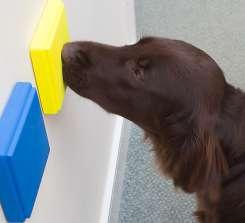
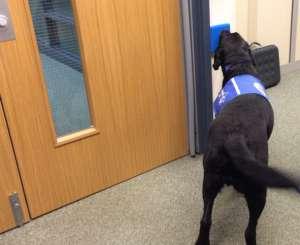
R uge Castro, L uisa Fernanda (2021) Image Credits:
How can we restructure public spaces to better accommodate mobility assistance dogs and their human partners, considering the sensory, cognitive, and physical traits of the dogs? The goal is to enhance accessibility for both the assistance dogs and the individuals they support.
According to ACI (2013), Luisa collaborated with Dogs for good, where they implemented a set of experimental control features within a building situated on The Open University campus. This initiative aimed to facilitate convenient access and utilization of the building for a PhD student and her mobility assistance dog. Through these prototypes, it has improved MAD working conditions, training times and performance. 17
15 16 17 ADI ADI Terms and Definitions: Assistance Dogs International. (2020). Retrieved from: https://assistancedogsinternational.org/resources/adi-terms-definitions/.
Ruge Castro, Luisa Fernanda (2021). Designing for the Animal User: Smart Controls for Mobility Assistance Dogs. PhD thesis The Open University. DOI: https://doi.org/10.21954/ou.ro.000131f7
Dog-Smart Homes: Improving Accessibility for Mobility Assistance Dogs | Animal-Computer Interaction Lab. (2013). Retrieved from: https://www.open.ac.uk/blogs/ACI/?page_id=791
g
Learnin Communicatio Attentio Memor Decision makin Problem solving Co
nitive
Open University, Animal-Computer Interaction Lab. (ACI) 28
Conclusion
05

In summary, this dissertation underscores the significance of enhancing the relationship between pet owners and their animals. It delves into pet behaviour, stress signals, and innovative communication approaches. Animal-Centred Design shows promise in improving pet wellbeing. By better understanding and communicating with animals, individuals can nurture more empathetic and rewarding connections, ultimately strengthening the bond that brings joy and companionship to both owners and pets.
Conclusion
30
Image Credits: Ирина Мещерякова, Getty Images/iStockphoto
06
Bibliography
Bibliography
1 Casey, R.A., Twells, C.,& Blackwell, E. J. (2007). 3: An investigation of the relationship between measures of consistency in owners and the occurrence of ‘behavior problems’ in the domestic dog. Journal of Veterinary Behavior, 2(3), 83-84.
2 Coren, S. (1999). Psychology applied to animal training. Psychology: Fields of application, 199-217.
3 Bennett, P. C., & Rohlf, V. I. (2007). Owner-companion dog interactions: Relationships between demographic variables, potentially problematic behaviours, training engagement and shared activities. Applied Animal Behaviour Science, 102(1-2), 65–84. Retrieved from: https://doi.org/10.1016/j.applanim.2006.03.009
4 Townsend, L., & Gee, N. R. (2021). Recognizing and Mitigating Canine Stress during Animal Assisted Interventions. Veterinary Sciences, 8(11), 254. Retrieved from: https://doi.org/10.3390/vetsci8110254
5 Shepherd, K. (2002). Development of behaviour, social behaviour and communication in dogs. In Horwitz, D. F., Mills, D. S., & Heath, S. (Eds.), BSAVA Manual of Canine and Feline Behavioural Medicine (8-20). Quedgeley, Gloucester: British Small Animal Veterinary Association.
6 Tami, G., & Gallagher, A. (2009). Description of behavior of domestic dog (Canis familiaris) by e x perienced and ine x perienced people. Applied Animal Behavior Science, 120, 159-169.
7 Rockwood, K. (2016) How My Dog and I Lost 140 Pounds. (2016, May 19). Good Housekeeping. Retrieved from: https://www.goodhousekeeping.com/health/diet-nutrition/a38567/how-my-dog-and-i-lost-weight/
8 Martos Martinez-Caja, A., De Herdt, V., Enders Slegers, M.-J., & Moons, C. P. H. (2021). Pets and their owners during the fi rst COVID-19 lockdown period: Perceived changes in routines and emotions – An e x ploratory study. Journal of Veterinary Behavior. Retrieved from: https://doi.org/10.1016/j.jveb.2021.09.009
9 Hunger, C. (2021). How Stella Learned to Talk : The groundbreaking story of the world’s fi rst talking dog. Bluebird.
1 0 Tacoma woman teaches her Sheepadoodle how to communicate using buttons. (2020, October 9). The Seattle Times. Retrieved from: https://www.seattletimes.com/life/a-talking-dog-tacoma-woman-teaches-her-sheepadoodle-how-to-communicate-usingbuttons/
11 Ruge L. In: First International Conference on Human Behavior Change for Animal Welfare. Dorking, Surrey, U K. (19 - 21 September 2016)
12 Brown, C. (2020, August 28) Wearable technology gives service dogs a voice. (n.d.). Wearable Technology Gives Service Dogs a Voice | Alltech. Retrieved from: https://www.alltech.com/blog/wearable-technology-gives-service-dogs-voice
13 metamusic Project Web-Site. Retrieved from: http://metamusic.at/ (accessed on 2 November 2023).
14 Gupfi nger, Reinhard & Kaltenbrunner, Martin. (2019). Animal-Centred Sonic Interaction Design: Musical Instruments and Interfaces for Grey Parrots. 1-11. 10.1145/3371049.3371062.
15 ADI . ADI Terms and De fi nitions: Assistance Dogs International. (2020). Retrieved from: https://assistancedogsinternational.org/resources/aditerms-de fi nitions/.
16 Ruge Castro, Luisa Fernanda (2021). Designing for the Animal U ser: Smart Controls for Mobility Assistance Dogs. PhD thesis The Open U niversity. DOI: https://doi.org/10.21954/ou.ro.000131f7
1 7 Dog-Smart Homes: Improving Accessibility for Mobility Assistance Dogs | Animal-Computer Interaction Lab. (n.d.). Retrieved from: https:// www.open.ac.uk/blogs/ACI/ ? page _ id = 791
The paragraphs were paraphrased using ChatGPT s assistance.
32














 Image Credits: Mikhail Pletnev, EyeEm via Getty Images
Image Credits: Alvan Nee, Unsplash
Image Credits: Good Dog People
Image Credits: Mikhail Pletnev, EyeEm via Getty Images
Image Credits: Alvan Nee, Unsplash
Image Credits: Good Dog People
 Image Credits: Mikhail Pletnev, EyeEm via Getty Images
Image Credits: Mikhail Pletnev, EyeEm via Getty Images


















